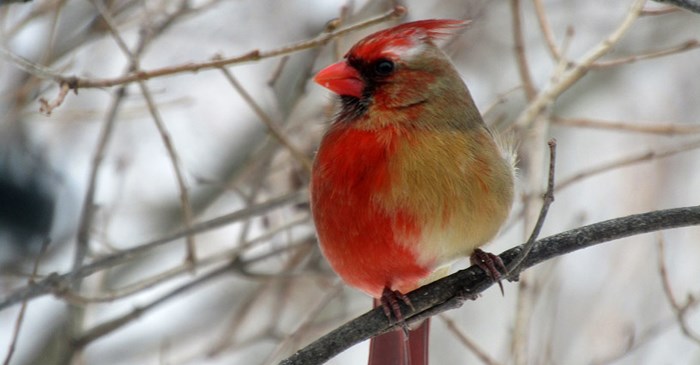Songbirds are predictable creatures, or so nature guides tell us. However, if you spend enough time watching birds, you’ll discover your share of rule-breakers.
The male Northern Cardinal is one that is easily recognized by birders throughout the eastern half of the U.S. With their bright red feathers, pointy crests, and warbling “Cheer! Cheer!”, they are the perfect combination of familiarity and distinguishability. Even the pale brown females sporting red tinges in their feathers are easily spotted among other less colorful birds.
Though it is a fairly consistent species, like anything else, there have been anomalies. The following looks at two of the rarest forms of the Northern Cardinal that sharp-eyed birders have seen in North America, and what causes these variations:
Half-male, half-female cardinal
Noted in cases both in Pennsylvania and Texas, lucky birders had a cardinal visitor like none other they had seen before. This visitor was a Northern Cardinal that looked like someone had taken a male and a female and combined them into one bird. One half of its form had the trademark red feathers of the male. The other half, the female’s tan feathers.
Scientists say it appears to be an instance of bilateral gynandromorphism, where half the bird's body develops as a male and the other half as a female. This occurs when a female egg develops with one of each gender chromosome.
Yellow cardinals
Another abnormality you may see is a cardinal that is canary yellow in color. Though rare, these golden cardinals are more common than the previously mentioned half-male, half-female varieties. This irregularity is paralleled to albinism in humans.
Scientists have two explanations for the yellow cardinal phenomenon:
Genetic Mutation
The bird could have a genetic mutation, wherein the case of this cardinal, is unable to convert its yellow plumage to its common crimson red. Though this mutation is commonly contributed strictly to genetics, it may also be related to the animal’s diet, where it renders the colors it draws from attributes found in the seeds and fruits they eat as yellow instead of red.
Quality of Life
In some cases, poor diet and environmental stresses may be keeping the bird from getting adequate nutrition, and that can be borne out in the yellow plumage.
Keep an eye out for rare birds
As the above examples demonstrate, familiar birds can sometimes show up in rare forms, teaching us much about the workings of nature. Keep the cardinals coming by filling your feeder with Lyric Cardinal Mix. When you settle in to watch with your mug of something hot this winter, keep your camera handy. Because you just never know when something unexpected will show up.
